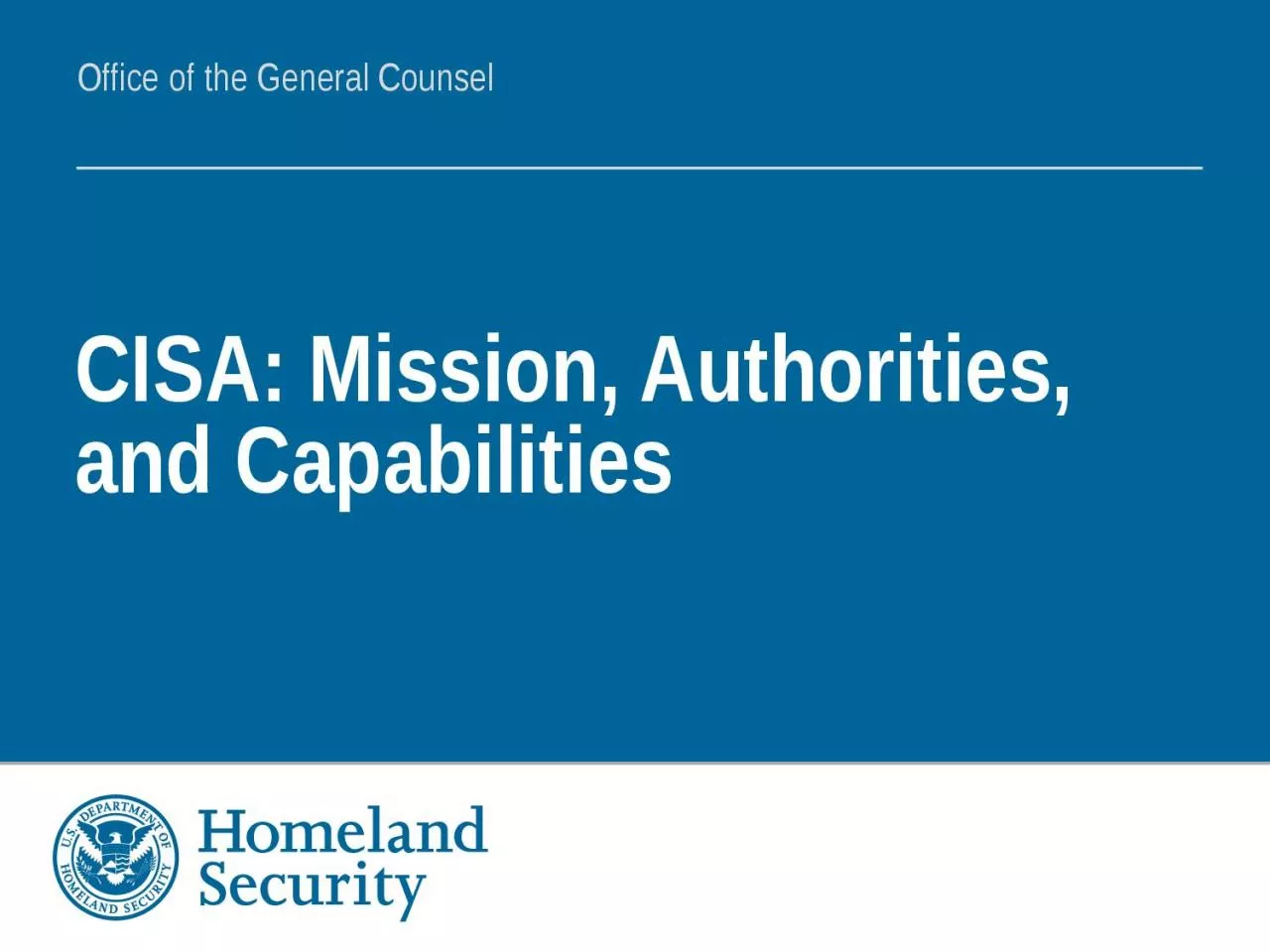PPT-
Author : jewelupper | Published Date : 2020-08-28
CISA Mission Authorities and Capabilities Composition of our Client The Agency shall be composed of the following divisions 6 USC 652f Composition The Cybersecurity
Presentation Embed Code
Download Presentation
Download Presentation The PPT/PDF document "" is the property of its rightful owner. Permission is granted to download and print the materials on this website for personal, non-commercial use only, and to display it on your personal computer provided you do not modify the materials and that you retain all copyright notices contained in the materials. By downloading content from our website, you accept the terms of this agreement.
: Transcript
CISA Mission Authorities and Capabilities Composition of our Client The Agency shall be composed of the following divisions 6 USC 652f Composition The Cybersecurity Division headed by an .
Download Document
Here is the link to download the presentation.
""The content belongs to its owner. You may download and print it for personal use, without modification, and keep all copyright notices. By downloading, you agree to these terms.
Related Documents

